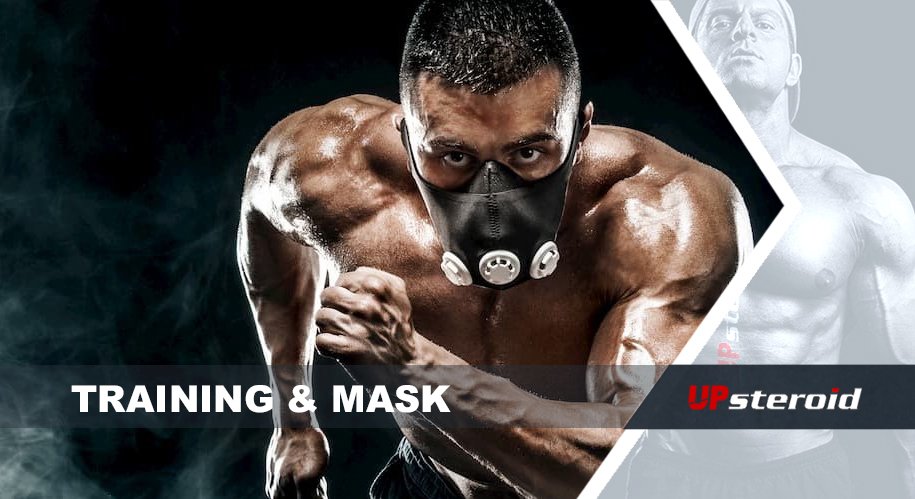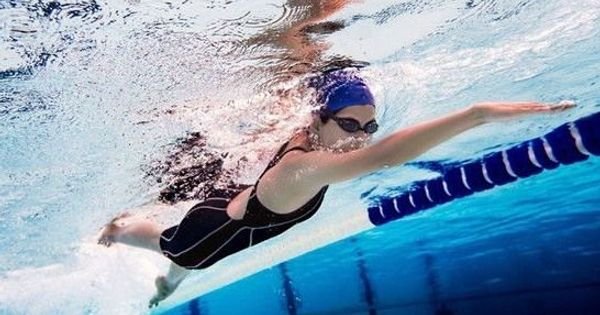Introduction
Nowadays' life has drastically changed due to the COVID-19 epidemic - we don't go out much anymore, and masks are worn everywhere to avoid catching it.
The mask is part of our daily life, but not without frustration. The sportsespecially, can be complicated with a mask - and is it really good for your health to wear a mask during training?
It's well possible to continue your workout regimen during this particular time - here are our tips on how to do it:
Is it safe to train with a mask?
Wearing a mask is one way to slow the spread of infectious diseases, including COVID. Yet, many people see the mask as a potential barrier to exercise.
But, don't worry - You are not putting your health at risk by wearing a mask during your physical activities.
However, some things need to be taken into consideration.
There is, in fact, decreased air flow with an mask during sport; that is, less oxygen reaching your body.
Also, as the heat is trapped in front of your face by the mask, your body temperature will rise, as will your heart rate.
A big caveatThe idea of carbon dioxide retention - that masks could trap CO2 near your mouth and make you dizzy - is a common talking point against masks, but doctors have debunked it pretty completely, pointing out that healthcare professionals typically wear masks for hours without adverse effects.
However, some of us are at greater risk when training with a mask.
It is recommended that people with chronic illnesses exercise alone at home, supervised as needed, without using a mask. Some of the more common illnesses include chronic obstructive pulmonary disease, asthma, occupational lung diseases, such as mesothelioma, and pulmonary hypertension.
In most situations, you should expect an increase in your heart rate when you train with a mask. For this reason, people often experience an increased rate of perceived exertion and decreased performance during resistance training and aerobic exercise. This feeling is similar to the physical and psychological effects experienced when training in places at higher altitudes.
Although your body is working very hard, you still cannot reach the milestones that you expect.
A study published in 2016 out of eight people found that wearing a mask during resistance training, like weight lifting, made people feel like they were working harder - but they actually showed less performance muscle than people performing the same movements without a mask.
Your aerobic routine might be a little less affected, however. A study of 2020 found that surgical masks did not appear to affect the performance of people pedaling on exercise bikes. It all depends on your individual cardiovascular fitness rate and the intensity of your workout, so carefully monitor your own performance.
This can often put your nervous system and breathing into “panic mode” - shortness of breath, increased anxiety, tremors, feeling of suffocation - so be careful to deal with this with breathing exercises.
If you wear a mask while exercising, be aware of:
- Dizziness
- Drowsiness
- Tiredness
- Headache
- Muscular weakness
- General discomfort
- Shortness of breath
If you experience these symptoms, stop and take a break until they go away. If possible, remove your mask and try to take a few soothing breaths. It can restore your breathing levels and reduce stress on your heart and lungs. If these symptoms persist or worsen, stop the activity. In severe cases, see a doctor.
What Kinds Of Training?
For this reason, it is recommended do light to moderate exercise rather than vigorous exercise while wearing a mask. The decrease in oxygen can affect breathing and your ability to properly regulate body temperature.
To determine if your activity is moderate / weak or vigorous, try the “speaking test”. Typically, a person performing a moderate-intensity aerobic activity can speak, but not sing, during the activity. A person who performs a strenuous activity cannot say more than a few words without pausing to breathe.
Examples moderate intensity exercise:
- Walk quickly at 2,5 mph or more
- Recreational swimming
- Bike slower than 10 MPH on flat terrain
- Recreational tennis, especially doubles
- Active forms of yoga, such as vinyasa
- Ballroom or line dancing
- General gardening and home repair work
- Exercise classes, such as water aerobics
Before training with a mask, consider reducing your exertion level - that is, the weight with a training resistance or mileage in aerobic activities, such as running and cycling - at a lower level than you would have done without a mask.
What Kind of Mask Should I Wear?
Masks fabric or moisture-wicking materials like polyester generally work well. Paper or surgical masks tend to break down as they get wet from the sweat and increased exhalation that occurs during exercise.
Mask material should not be more than two layers thick.
You should not use an N95 mask during exercise, as these masks have been found to increase levels of humidity, heat, resistance to breathing, and general discomfort.
You can also consider having a spare mask on hand to replace a wet mask.
A great way to maintain good hand hygiene when changing masks is to take a travel-size container of hand sanitizer with you.
Masks are also very effective at reducing the amount of pollution you inhale, whether you are in the middle of a workout or not.
There are specific masks that you can find that are designed specifically to prevent more pollution, ideally if you live in an urban or heavily polluted area.






